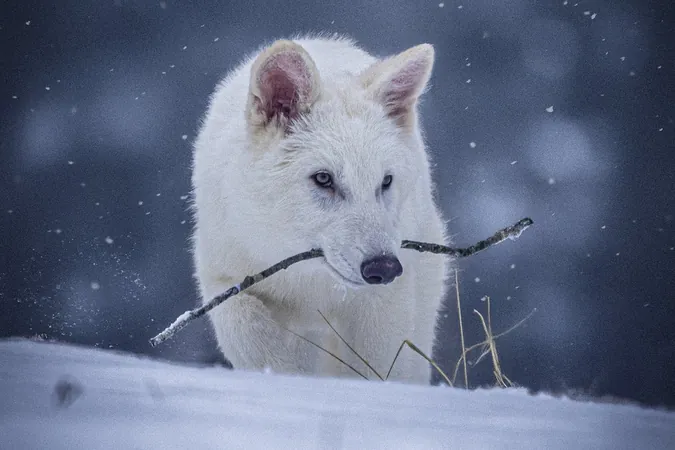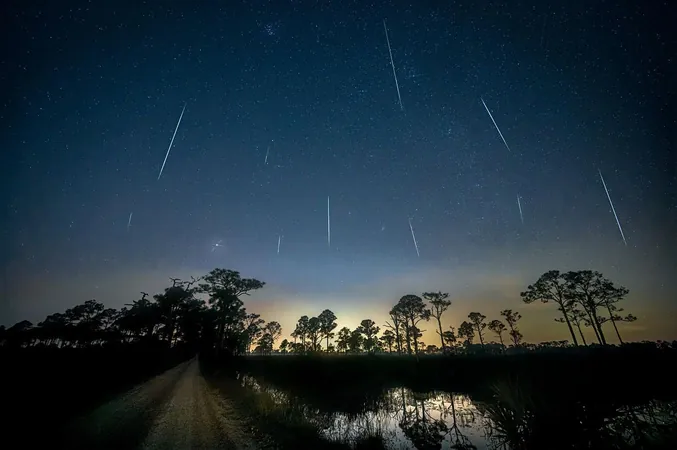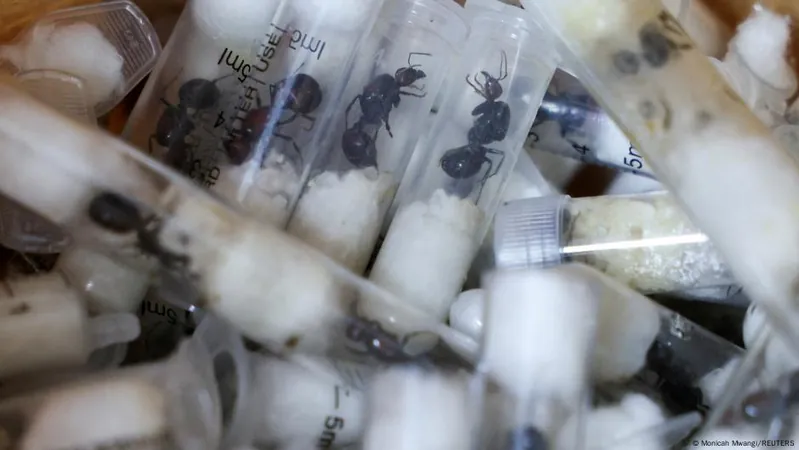
Groundbreaking Genetic Engineering: Scientists Create Wolves with Dire Wolf Traits!
2025-04-08
Author: Jacques
Introduction
In a stunning advance in genetic engineering, researchers have successfully created three genetically modified wolves that closely resemble the extinct dire wolves. These remarkable animals are currently residing in a secure, undisclosed location in the United States, as part of an ambitious project aimed at resurrecting lost species.
Characteristics of the Modified Wolves
The wolf pups, aged between three and six months, showcase striking features: they have long white fur, powerful jaws, and are already weighing about 80 pounds, with projections to reach a hefty 140 pounds as adults. This endeavor was reported on Monday by Colossal Biosciences, a company dedicated to de-extinction initiatives.
Historical Context and Scientific Skepticism
Dire wolves, which vanished more than 10,000 years ago, were significantly larger than today’s gray wolves—their closest modern relatives. This groundbreaking research has stirred both excitement and skepticism among scientists. Some experts, like Vincent Lynch from the University at Buffalo, caution that while the physical appearance of these engineered pups may mirror that of dire wolves, it’s crucial to understand that full revival of an extinct species remains out of reach. "All you can do now is make something look superficially like something else," Lynch remarked.
Methodology
The Colossal team utilized ancient DNA from dire wolf fossils—such as a 13,000-year-old tooth from Ohio and a 72,000-year-old skull fragment from Idaho—to identify key genetic traits. Using CRISPR technology, the researchers modified blood cells from a living gray wolf at 20 different genetic sites. This modified material was then integrated into an egg cell from a domestic dog, and after 62 days of gestation in surrogate dogs, the genetically engineered pups were born.
Other Conservation Efforts
In addition to these innovative wolves, Colossal Biosciences has also unveiled a project where they successfully cloned four red wolves with blood drawn from the critically endangered species in the southeastern U.S. By increasing genetic diversity within the captive red wolf population, scientists hope to enhance the species' chances of survival.
Implications and Challenges
Experts believe that the implications of this technology could extend to conservation efforts for various species, as it is perceived to be less invasive than traditional cloning methods. However, challenges remain; for instance, obtaining a blood sample from a wild wolf often requires sedation—a procedure that isn't as straightforward as it sounds.
Collaboration and Future Prospects
Colossal’s CEO, Ben Lamm, revealed that the team has collaborated with officials from the U.S. Interior Department regarding these de-extinction projects. Interior Secretary Doug Burgum has hailed this work as the dawn of a "thrilling new era of scientific wonder," although many scientists emphasize the limitations of such restoration efforts. "Whatever ecological function the dire wolf performed before it went extinct, it can’t perform those functions on today’s existing landscapes," Lynch warned.
Conclusion
As these pioneering efforts continue, the world watches with bated breath—will this mark the beginning of a new wave of de-extinction? The quest for resurrecting the past just got more intriguing! Stay tuned for further updates on these fantastic developments in genetic engineering and conservation science!









 Brasil (PT)
Brasil (PT)
 Canada (EN)
Canada (EN)
 Chile (ES)
Chile (ES)
 Česko (CS)
Česko (CS)
 대한민국 (KO)
대한민국 (KO)
 España (ES)
España (ES)
 France (FR)
France (FR)
 Hong Kong (EN)
Hong Kong (EN)
 Italia (IT)
Italia (IT)
 日本 (JA)
日本 (JA)
 Magyarország (HU)
Magyarország (HU)
 Norge (NO)
Norge (NO)
 Polska (PL)
Polska (PL)
 Schweiz (DE)
Schweiz (DE)
 Singapore (EN)
Singapore (EN)
 Sverige (SV)
Sverige (SV)
 Suomi (FI)
Suomi (FI)
 Türkiye (TR)
Türkiye (TR)
 الإمارات العربية المتحدة (AR)
الإمارات العربية المتحدة (AR)